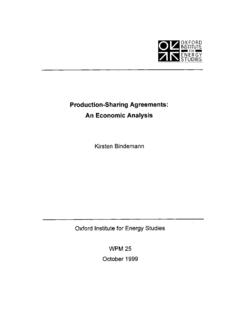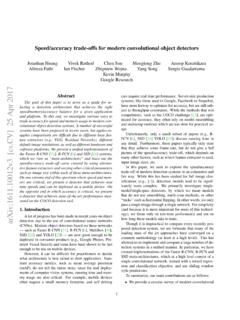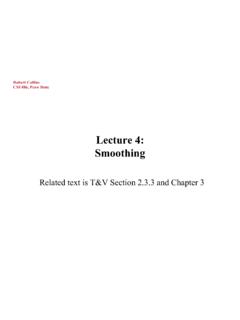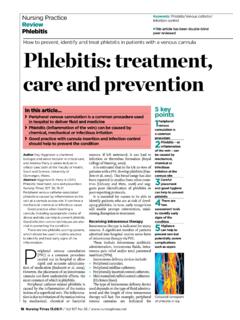Transcription of OCR B GCSE GEOGRAPHY REVISION PRACTICE QUESTIONS
1 OCR B GCSE GEOGRAPHY REVISION PRACTICE QUESTIONS Here is a list of example QUESTIONS for each topic to help you understand what you could be asked on each section but it is not an exhaustive list. There is also a very comprehensive set of example exam QUESTIONS at the end of every chapter in your textbook use these too. There is no markscheme for these QUESTIONS but see the guidance in your mock REVISION pack for an idea about how they will be marked. GLOBAL HAZARDS From the exam specification Short QUESTIONS (1-4 marks) Long QUESTIONS (6-8 marks) How do plate tectonics shape our world? a. Why do we have weather extremes? Outline of the global circulation system including the effects of high and low pressure belts in creating climatic zones.
2 How the global circulation of the atmosphere causes extremes in weather conditions in different parts of the world. The extremes in weather conditions associated with wind, temperature and precipitation in contrasting countries. The distribution and frequency of tropical storms and drought, and whether these have changed over time. Outline the causes of the extreme weather conditions associated with tropical storms. Outline the causes of the extreme weather conditions of El Ni o/La Ni a leading to drought. - Which climate zone is found where Hadley and Ferrel cells meet? (1 mark) -Why do deserts form 30 degrees North and South of the equator? (4 marks) -Draw a diagram to show the formation of a tropical storm.
3 (3 marks) - Explain how human factors can make the effects of drought worse. (6 marks) b. When does extreme weather become a hazard? Case studies of two contrasting natural weather hazard events arising from extreme weather conditions. Flash flooding: Boscastle 2004 Drought: The big dry Australia For each chosen hazard event, study the place specific causes (including the extreme weather conditions which led to the event), consequences of and responses to the hazard. -Describe and explain two effects of a hazardous weather event you have studied. (4 marks) -Explain how an extreme weather event you have studied was caused by a combination of human and physical factors. (Boscastle) (8 marks) - Evaluate the success of the responses to a drought event you have studied.
4 (Australia drought). (8 marks) OCR B GCSE GEOGRAPHY REVISION PRACTICE QUESTIONS How do plate tectonics shape our world? a. What processes occur at plate boundaries? The structure of the Earth and how it is linked to the processes of plate tectonics including convection currents. The processes that take place at constructive, destructive, conservative and collision plate boundaries as well as hotspots. How the movement of tectonic plates causes earthquakes, including shallow and deep focus, and volcanoes, including shield and composite. -What type of plate margin is found between the UK and the USA? (1 mark) -With the help of a diagram explain the processes that occur at a collision plate boundary.
5 (4 marks) -Explain how a hotspot forms. (4 marks) b. How can tectonic movement be hazardous? A case study of a tectonic event that has been hazardous for people, including specific causes, consequences of and responses to the event. -Draw an annotated diagram to explain why earthquakes occur at conservative plate boundaries. (4 marks) -With the help of a hazardous event you have studied explain the difference between the immediate and long term effects. (8 marks) (Haiti) - Evaluate the success of the responses to a hazardous event you have studied. (6 marks) (Haiti) c. How does technology have the potential to save lives in hazard zones? How technological developments can have a positive impact on mitigation (such as building design, prediction, early warning systems) in areas prone to earthquakes -What makes predicting an earthquake difficult?
6 (3 marks) -How is media used to save lives in hazard zones? (4 marks) - To what extent do you agree with the statement We will never predict earthquakes . (8 marks) OCR B GCSE GEOGRAPHY REVISION PRACTICE QUESTIONS CHANGING CLIMATE From the exam specification Short QUESTIONS (1-4 marks) Long QUESTIONS (6-8 marks) What evidence is there to suggest climate change is a natural process? a. What evidence is there for climate change? The pattern of climate change from the beginning of the Quaternary period to the present day. The range and reliability of evidence relating to climate change including evidence from sea ice positions, ice cores, global temperature data, paintings and diaries. Figure 1 and 2.
7 Mastodons were widespread across the USA and Europe during cold glacial periods - Study figures 1 and 2. How can fossils provide useful evidence about past climates? (3) - Compare the reliability of two sources of evidence of climate change (4) Proxy data are not reliable sources of paleoclimatic information To what extent do you agree with this view? (6) b. Is climate change a natural process? Outline the causes of natural climate change including the theories of sun spots, volcanic eruptions and Milankovitch cycles. Investigate the natural greenhouse effect and the impacts that humans have on the atmosphere, including the enhanced greenhouse effect. - What is meant by the term volcanic winter (4) - What is the enhanced Greenhouse effect?
8 (4) - What are sunspots and how do they affect the Earth s climate? (4) Discuss the view that climate change is a purely natural process (8) c. Why is climate change a global issue? Explore a range of social, economic and environmental impacts of climate change worldwide such as those resulting from sea level rise and extreme weather events. The impacts studied should relate to the 21st century. Explore a range of social, economic and environmental impacts of climate change within the UK such as the impact on weather patterns, seasonal changes and changes in industry. The impacts studied should relate to the 21st century. - Outline two possible effects of climate change on extreme weather across the planet over the next 50 years (4) Assess whether the social impacts of climate change experienced in the UK in the 21st Century are greater than the environmental impacts (8) OCR B GCSE GEOGRAPHY REVISION PRACTICE QUESTIONS DISTINCTIVE LANDSCAPES From the exam specification Short QUESTIONS (1-4 marks) Long QUESTIONS (6-8 marks) What makes a landscape distinctive?
9 A. What is a landscape? How the concept of a landscape can be defined, including the differences between built and natural landscapes. What are the main characteristics of a built landscape (2) Look at Figure A (of a coastal landscape) and annotate the landscape elements that you can see (2) Briefly describe what is meant by a natural landscape (1) b. Where are the physical landscapes of the UK? Overview of the distribution of upland, lowland and glaciated landscapes in the UK. Overview of the characteristics of these landscapes which make them distinctive including their geology, climate and human activity. Describe the distribution of upland and lowland landscapes in the UK (4) Explain how geology can affect the landscape that forms on the surface (3) Compare land uses in upland and lowland areas in the UK (4) Explain how the geology of the UK gives rise to distinctive landscapes.
10 Refer to one or more named rock types (6) Describe how the climate of the UK gives rise to distinctive landscapes. Refer to named locations in your answer (6) What influences the landscapes of the UK? a. What physical processes shape landscapes? The geomorphic processes that are involved in shaping landscapes, including weathering (mechanical, chemical, biological), mass movement (sliding, slumping), erosion (abrasion, hydraulic action, attrition, solution), transport (traction, saltation, suspension, solution), deposition. The formation of coastal landforms including headlands, bays, cave, arch, stack, beach and spit. The formation of river landforms including waterfall, gorge, v-shaped valley, floodplain, levee, meander, ox-bow lake.




![Abstract arXiv:1506.02640v5 [cs.CV] 9 May 2016](/cache/preview/a/3/9/e/e/5/9/7/thumb-a39ee597b55a06b0e86e1cebc7152b1f.jpg)


